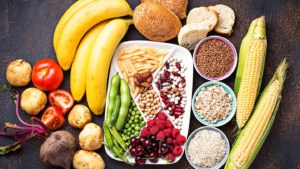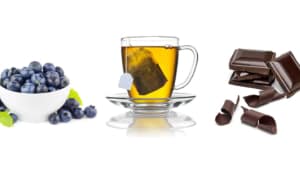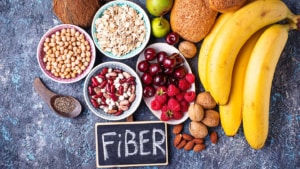At the Institute for the Advancement of Food and Nutrition Sciences research serves as the foundation for our actions. See our current grant opportunities below.
Current Opportunities:

Scientific integrity is a core value of IAFNS. Learn how we embed scientific integrity into every step of our research process.
Projects Funded by IAFNS:
IAFNS's mission is to advance food safety and nutrition science for the benefit of public health. View projects funded by IAFNS below, and learn how we embed scientific integrity into every step of our research process.
Heavy Metals in US Foods: Exposure Assessment by Age Group and Mitigation Strategies
Heavy metals such as arsenic (As), cadmium (Cd), lead (Pb), and mercury (Hg) have the potential to cause neurocognitive impairment to infants and young children who are exposed to them in their diets. These elements can also cause chronic toxicological effects in older children and adults. To help address these risks it is important to […]
A Framework for Heavy Metal Prioritization and Mitigation for Reducing Metal Intake: Rice and Spinach Case Studies
Rice is a significant source of arsenic and other elemental toxins (e.g. mercury and cadmium) to the human diet, particularly in foods for babies and young children. Spinach is a significant source of the highly toxic metals Cd and Pb as well as other chemicals with negative health implications (e.g., organics, perchlorate), but the processes […]
The Scientific Basis of Communicating Carbohydrate Quality
A workshop was convened jointly with Diabetes Canada to advance the dialogue between scientists and regulatory experts on science-based indices that can be used in communicating physiologic effects of carbohydrates in foods. Experts agreed that the carbohydrate quality of a food would take into account multiple factors, including whole food credentials, the glycemic response to […]
Standing Committee on Bioactive Recommendations
Growing evidence suggests that lutein for vision and flavan-3-ols for cardiovascular disease could be candidates for quantified recommended intakes. In 2014, Elwood et al. pointed out the challenges and suggested that a framework be developed to recommend bioactive intakes not currently covered by approaches used to establish nutrient intakes to prevent deficiencies. A standing committee […]
Beverage Caffeine Intake Study
A large variety of new caffeinated beverage products have entered the market in recent years, including new types of energy drinks, cold brew and ready-to-drink specialty coffees and teas, and caffeinated waters and sports drinks. With shifts towards remote work and learning, online food and grocery ordering, and rapid pickup and delivery options for consumers, […]
Recommending a quantified intake of flavan-3-ols promote heart health
Dietary bioactives are food substances that promote health but lack quantified intake recommendations because they are not characterized as essential to prevent well defined deficiency conditions. This project translates evidence from a comprehensive systematic evidence review by Raman et al. using the AND guideline development process and applying a recently released (ASN endorsed) framework for […]
Identify Safety Barriers to Broad Adoption of Recycled Polyolefins for Food Packaging
Defining a path to the production of clean recycled plastics is key to their sustainable use in food and beverage packaging. Despite significant advances in recycling science, obstacles remain to broad utilization of recycled plastics including the need for reliable and predictable sources of safe and inexpensive post-consumer products. This project will identify key elements […]
Metabolic and Physiological Effects of Added Fibers for Children Across the Age Spectrum
Fibers added to foods may provide specific health benefits, but these relationships would benefit from research specifically on children rather than extrapolated from adults. This project will prioritize research needed to understand the relationship between fibers added to foods and support specific health outcomes at varying stages from young children through teens. The long term […]
Addressing Perceptions of Low- and No-Calorie Sweeteners in the Healthcare Practitioner Community
Misperceptions are not new about low-and no-calorie sweeteners (LNCSs) within the healthcare practitioner (HCP) community and among consumers. Some confusion can be attributed to the mixed literature on LNCSs that results from variation in study hypotheses, design, interpretation and communication. Understanding HCP perspectives on LNCSs supports science-based information delivery to patients and clients. The first […]
Advancing Exposure Assessment for Food Contaminants Through Implementation of Probabilistic Modeling
Risk assessments for foods, ingredients and additives have evolved over the past few decades to incorporate new techniques such as benchmark dose modeling, and to further develop the utility of tools such as the threshold of toxicological concern, and even to explore advancements in carcinogen risk assessment. However, exposure assessments still tend to rely on […]
Evidence Map on the Relationship Between Exposure to Dietary Sweetness and Body Weight-Related Outcomes in Adults
Dietary recommendations from numerous governmental and health organizations recommend reduced intake of added sugars due to the health risks, including the risk of overweight and obesity. Some recommendations include avoiding dietary sweetness – regardless of the source – based on the hypothesis that reduced exposure to dietary sweetness will reduce the preference and desire for […]












